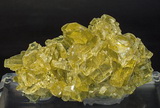Barites are mainly used by the oil and gas industry as a weighting agent in drilling muds. Oil and gas exploration accounts for about 85% of global barite consumption, though this share is a flexible figure dependent on time and specific location and prone to fluctuations subject to multiple factors.
Other barite applications are varied with different usage shares, which are also susceptible to volatility. There are a number of substitutes for barite in drilling applications (celestite, ilmenite, iron ore, synthetic hematite, etc.), but none of them could match barite due to its high specific gravity (SG), non-corrosiveness, chemical inertness, non-toxicity, very low solubility and relative cheapness.
The demand for barite in drilling applications is a variable with a complex dynamics. The general demand for barite will demonstrate an upward trend in the coming years. The shortage of high quality drilling-grade barite with sufficient base specific gravity is likely to be a persistent issue. The SG of above 4.2 g/cm3 is a long-existing standard both according to OCMA and API, though API has already eased off this standard by allowing a choice of using a new barite grade with SG of 4.1 g/cm3. In general, drilling barite is mined in a limited number of countries, while many deposits in the USA (esp. in Nevada, which is a major US barite-mining region), India (the Mangampet barite deposit in Andhra Pradesh) or China are being depleted at a fast rate.
Barite-producing countries in 2014

The market for drilling fluid production is heavily monopolized, which fosters high demand and possible supply deficiencies with respect to barite. There is also a general correlation between oil and gas-well rig activity and barite consumption. Since this activity will remain high in the near future, though it may fluctuate in response to oil and gas price volatility, the demand for drilling barite will be on the rise.
The demand for drilling barite is also affected by regional barite-mining policies (like barite floor price regulation in India, reorganization of barite mines in China or China’s cancellation of 10% export tax on powdered barites to boost competitiveness of Chinese barite in international markets), economics of barite supply from deposits to drilling hotspots and barite-milling plants, mining technology innovations, environmental concerns and other factors. In future, China and India will still be the main barite suppliers.
More information on the barite market can be found in the insightful research study “Barite: 2016 World Market Review and Forecast”
